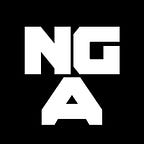Talking Country
Shane Nelson, NGA Indigenous Program Producer, reflects on the power of starting conversations.
I believe in the power of sharing our stories. By talking to each other, Indigenous and non-Indigenous people get a better understanding of our own humanity — we can recognise our similarities, rather than our differences.
I’m an Indigenous man with Wiradjuri, Walgalu and Gumbaynggirr heritage. I was separated from my family when I was young. I travelled with a very loving family, but I always felt different, and I always knew that I saw the world differently. Regardless of where you’ve grown up, a common Indigenous experience is a dispossession of identity.
It took me a long time to understand who I am and where I come from. When I started to understand my own identity and ancestral culture, things started falling into place around my life. I could begin rebuilding my connection with some of those things I’d missed when I was young.
I’ve found that — when we reclaim and celebrate our identity — Indigenous Australians start conversations. We become connected.
Getting involved in cultural expression also gives us the chance to relate to people from a different world view. Because non-Indigenous people don’t often get the opportunity to delve deeply into Aboriginal culture and have those discussions, I’ve developed the NGA’s Indigenous Cultural Experiences.
These experiences, ranging from Welcome to Country ceremonies to Bush Tucker tours, provide visitors with a chance to engage with the Aboriginal and Torres Strait Islander Art collection in a way that gives it context, and grounds it in Country.
The NGA Sculpture Garden is full of hidden sources of bush tucker and medicine — from gahnia, or sword grass, to banksia, or native honeysuckle.
The kind of dialogue that’s occurring between Indigenous and non-Indigenous Australians now couldn’t have happened ten years ago. Cultural institutions are now taking on the challenge of sharing our cultures and bringing them together into a narrative that connects all of us, even if that narrative is difficult.
The NGA’s collection of Aboriginal and Torres Strait Islander artworks plays an important role in shaping an honest understanding of the history of this country and an appreciation of the complexity of Indigenous Australia. The collection includes pieces from all around the nation. Sometimes Indigenous art is seen through the lens of ‘Aboriginal’ — people think our culture is very similar — when really these works capture the amazingly powerful diversity of Indigenous culture and cultural expression.
Together, these works present a learning opportunity. They represent the chance to connect to different places, different energies, and different knowledge systems.
I’m a firm believer that energies are drawn to a place when they are needed. Country has an energy and, at different times, Country needs different energies to operate.
Country has drawn us to this point, to have these discussions, to promote new dialogues. It’s what Country wants.
We need to put one foot in front of the other and continue the journey.
The next NGA Bush Tucker Tour takes place on Saturday 29 September. Sign up here.
